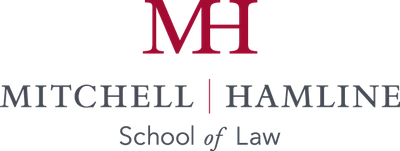Mitchell Hamline School of Law is committed to complying with all applicable intellectual property and copyright laws of the United States. The School provides this information to assist faculty, staff and other community members in understanding and complying with copyright law. It is not a comprehensive or exhaustive guide to the wide diversity of contexts in which the use of copyrighted materials arise nor is it a substitute for legal advice.
Copyright in Education Contents
- Part 1. Copyright Generally
- Part 2. Copyright in Education Basics
- Part 3. Summary of the TEACH Act (17 U.S.C. 110(2))
- Part 4. Linking to Textual Content
- Part 5. Guidance on Applying the Factors of Fair Use
- Part 6. Linking to Audio/Visual Content from the Web in Your Canvas Course
Guidance on Applying the Factors of Fair Use
The purpose of copyright is to promote the creation of new works for the public good by providing authors and other creators with an economic incentive to create. This is balanced against the need for some unpaid use of copyrighted material by authors and scholars to allow for the building of ideas upon one another and to prevent copyright from acting as a straitjacket on the creative activity it seeks to foster. Cambridge Univ. Press v. Patton, 769 F. 3d 1232, 1238 (11th Cir. 2014).
In the educational setting the most important exception that allows for the unlicensed (usually unpaid) use of copyrighted material is the doctrine of fair use. The doctrine of fair use developed over many years in common law before it was codified in Section 107 of the Copyright Act. Section 107 contains a list of the various purposes for which the unlicensed reproduction of a copyrighted work may be considered fair use including teaching, scholarship and research. It also sets out four factors to be considered when determining if a specific use is fair.
- The purpose and character of the use, including whether such use is for nonprofit educational purposes;
- The nature of the copyrighted work;
- The amount and substantiality of the portion used in relation to the copyrighted work as a whole; and
- The effect of the use upon the potential market for, or value of, the copyrighted work.
Various guidelines and checklists have been developed over the years incorporating court decisions interpreting and applying the four factors to particular cases of claimed copyright infringement. Fair use applies outside the educational setting so these guidelines contain some considerations that may not apply in fair use analysis in an academic setting. One of the most widely used has been developed by Kenneth D. Crews at Columbia University.
Columbia University Libraries Fair Use Checklist
The most recent case to consider fair use in the educational setting gives some useful guidance on thinking about the four factors. Cambridge Univ. Press v. Patton, 769 F. 3d 1232 (11th Cir. 2014). Each use must be considered on its particular facts. It’s a work-by-work analysis. There is no page limit or percentage of content that can act as a bright line under all circumstances that separates fair use from infringement. The amount taken — qualitatively and quantitatively — should be reasonable in light of the pedagogical purpose of the use and the threat of market substitution. The Court found that the district court erred in “giving each of the four fair use factors equal weight,””setting a 10 percent-or-one chapter benchmark” for the third factor, and should “have afforded the fourth fair use factor more significant weight in its overall fair use analysis.” Patton, 769 F. 3d at 1283.
If possible, it is preferable to link to (and to provide a citation for) material already legally available rather than scanning or making a copy of the work. All materials linked or uploaded to Mitchell Hamline’s course management system, regardless of medium or format, must include proper attribution and copyright notices.
If you are using an article or excerpt semester after semester it’s probably not fair use, and it is better to obtain a license. The Copyright Clearance Center has an easy tool to get an estimate for the cost of a license for an article or excerpt from a book to use in your class. The library can assist you with obtaining licenses or permissions. Contact [email protected].
